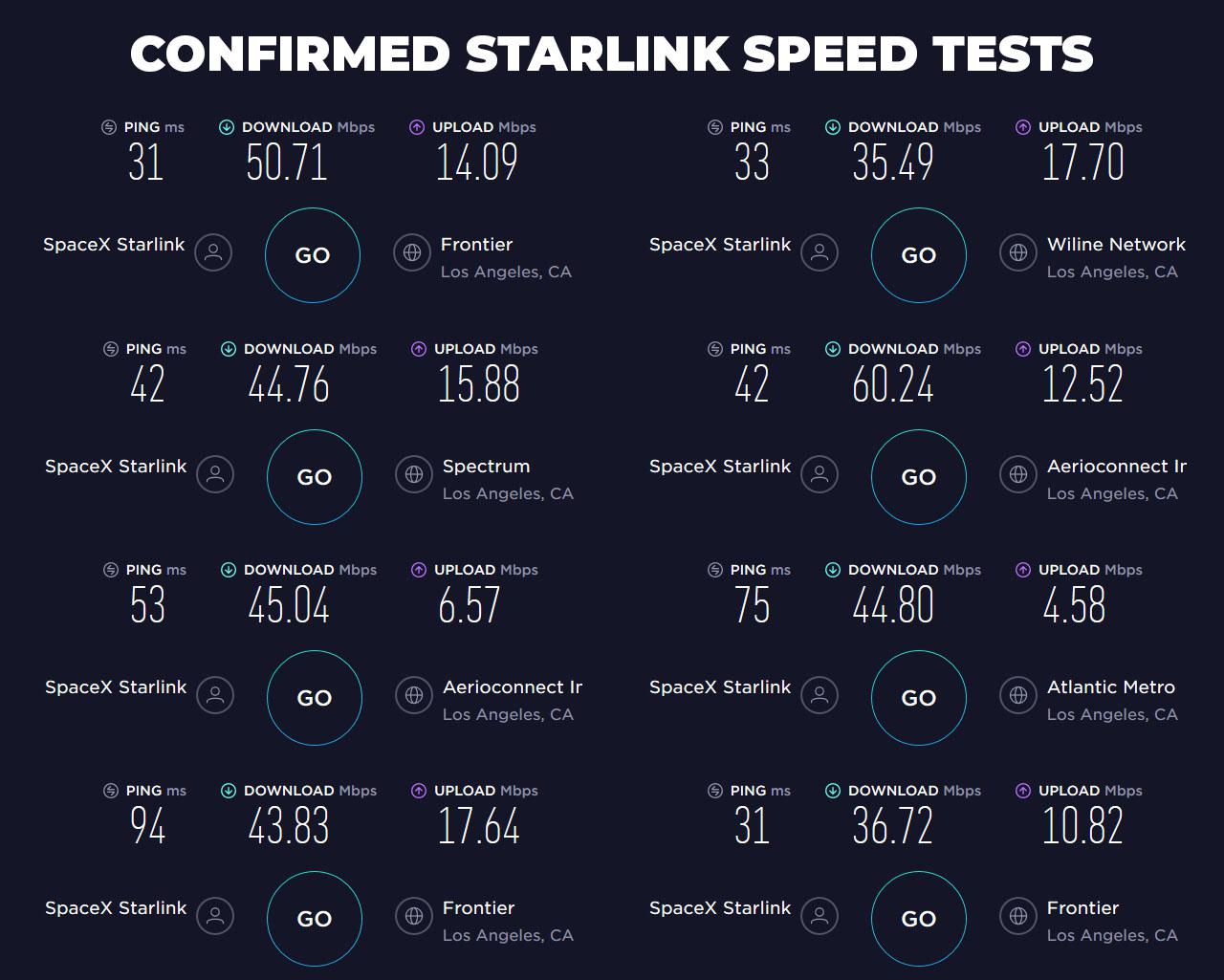

The question is how fast is Starlink’ internet service? The Starlink website stated
“During beta, users can expect to see data speeds vary from 50Mb/s to 150Mb/s and latency from 20ms to 40ms in most locations over the next several months as we enhance the Starlink system.”
It is impressive compared to the average satellite internet which has latency of 638ms and download spread ranging from 25 to 100 Mb/s.
A CNN article reported that the cost of the service is billed at $99 per month, plus taxes and fees, plus an initial payment of $499 for the mountable satellite dish and router that you'll need to install at home. By comparison, the HughesNet service costs as much as $150 a month, with a 50GB high-speed data plan (at 25Mbps) and horrible latency. Starlink is definitely a game changer.
The U.S. Federal Communications Commission (FCC) has granted SpaceX permission to fly 12,000 satellites and perhaps as many as 30,000 eventually. His Space Exploration Technologies Corporation sent up the first Starlink satellites in May 2019. At the moment Starlink currently has over 1200 working satellites in orbit and by 2025 expected to have no less than 11000 satellites. Apart from the fundamental goodness inherent in the Starlink project, it is also a very promising cashflow for SpaceX. According to Elon Musk, he hoped to capture a part of the estimated $1 trillion worldwide telecommunication. The company could net $30 billion to $50 billion a year. That would be a huge boost over SpaceX's launch revenue, which tops out at around $3 billion per year, Musk added. The extra money could allow SpaceX to do what Musk has repeatedly said is the company's main goal: help humanity become a multi planet species.
“We think this is a key stepping stone towards establishing a self-sustaining city on Mars and a base on the moon,” Musk said of Starlink. "We believe we can use the revenue from Starlink to fund Starship."
Moreover, SpaceX is launching Starlink satellites using its own Falcon 9 rockets which give it a cost advantage to its competitors. It is approximately $300,000 for one satellite. In May 2021, Elon Musk announced a new partnership to bolster the use of its satellite Internet connectivity. SpaceX has collaborated with Google Cloud to deliver data, cloud services, and applications to its enterprise customers. This move will further increase Starlink’s ability to deliver efficient service.
There are plenty of concerns about the impact of low-orbiting satellites. Firstly, they are as bright as the stars. Therefore, the astronomers’ views may be disrupted by these satellites and fail to detect near-Earth objects. SpaceX has responded with the DarkSat, the satellites coated in black. They have also added visore to shield the shiny parts from the ground. However, none of this will fully solve the problem. Secondly, there are some concerns about the amount of space debris that could be generated with thousands of Starlink satellites in orbit. However, SpaceX claims that the satellites will use their onboard thrusters to avoid other orbiting crafts. Also, the Starlink’s satellites are low-orbiting which make them low enough to get pulled down to Earth so they don’t become space junk once they die. Overall, everything depends on how good the autonomous systems are on these satellites.
Starlink still has many questions to answer regarding its satellites’ impact on our night sky or its cost and capacity. For now, service is limited to the northwest US, adjacent parts of Canada, parts of the UK and select other areas, but the coverage map will grow considerably as more satellites join the constellation. It is still a long way to go - Starlink will likely need at least 10,000 satellites in orbit before it can claim to cover a majority of the globe (and SpaceX has shown signs that it wants as many as 30,000 satellites in the constellation). Right now, it's only about 10% of the way there at best.
How far can it go? Only time can tell.
- Starlink website
- Starlink's operation in Australia
- Wikipedia
- Elon's annoucement
- Techinsider
- AFR-Elon Musk's next big thing
- Space - Starlink Satellites
- Space - SpaceX mars colonization
- Starlink - A Deep Look at SpaceX's Internet of the Future
- Why Starlink Is Crucial To SpaceX’s Success
- What is Starlink CNBC - Starlink service price
- Google partners with SpaceX
- Spacenews- Starlink sustainability concern
- Medium - Starlink changing the global business
